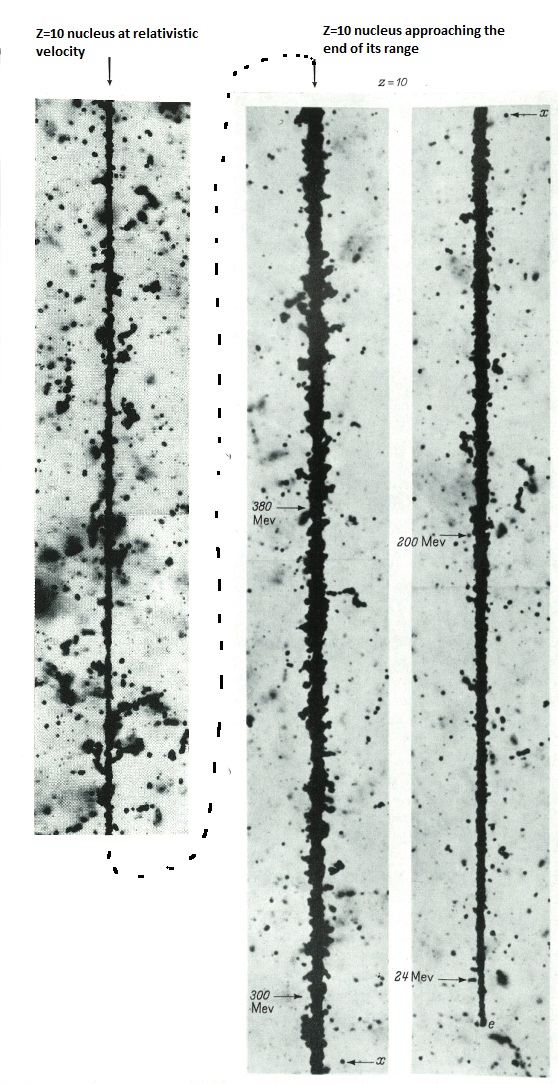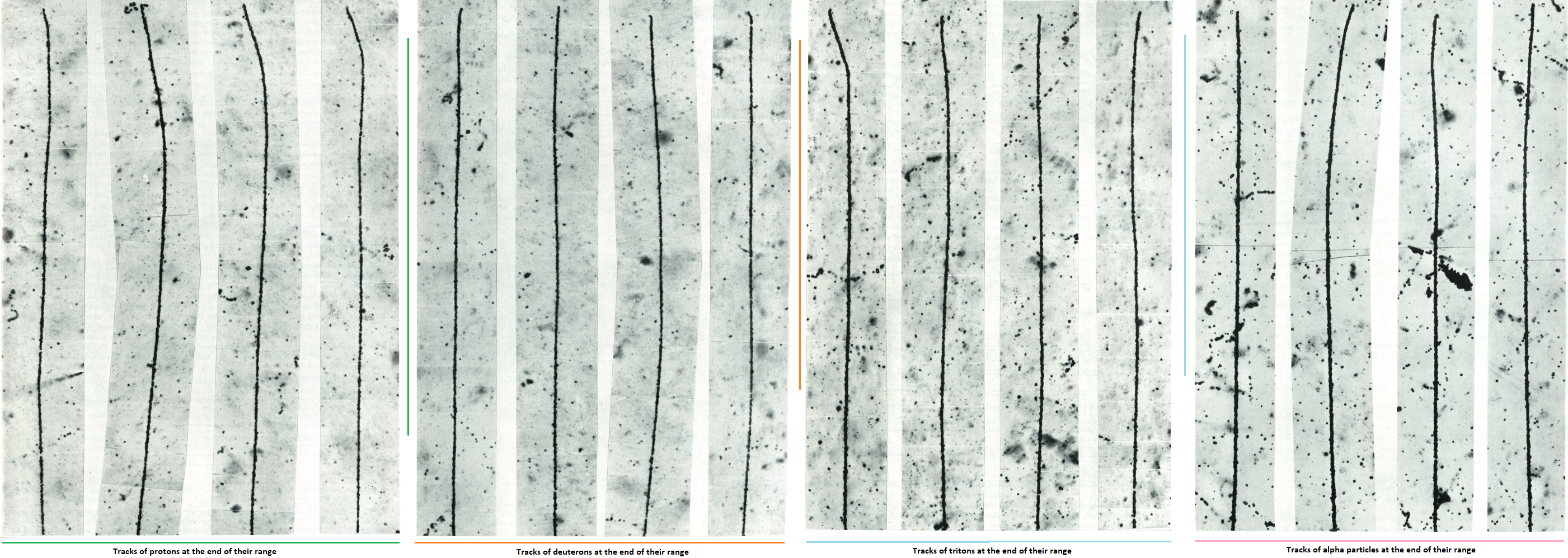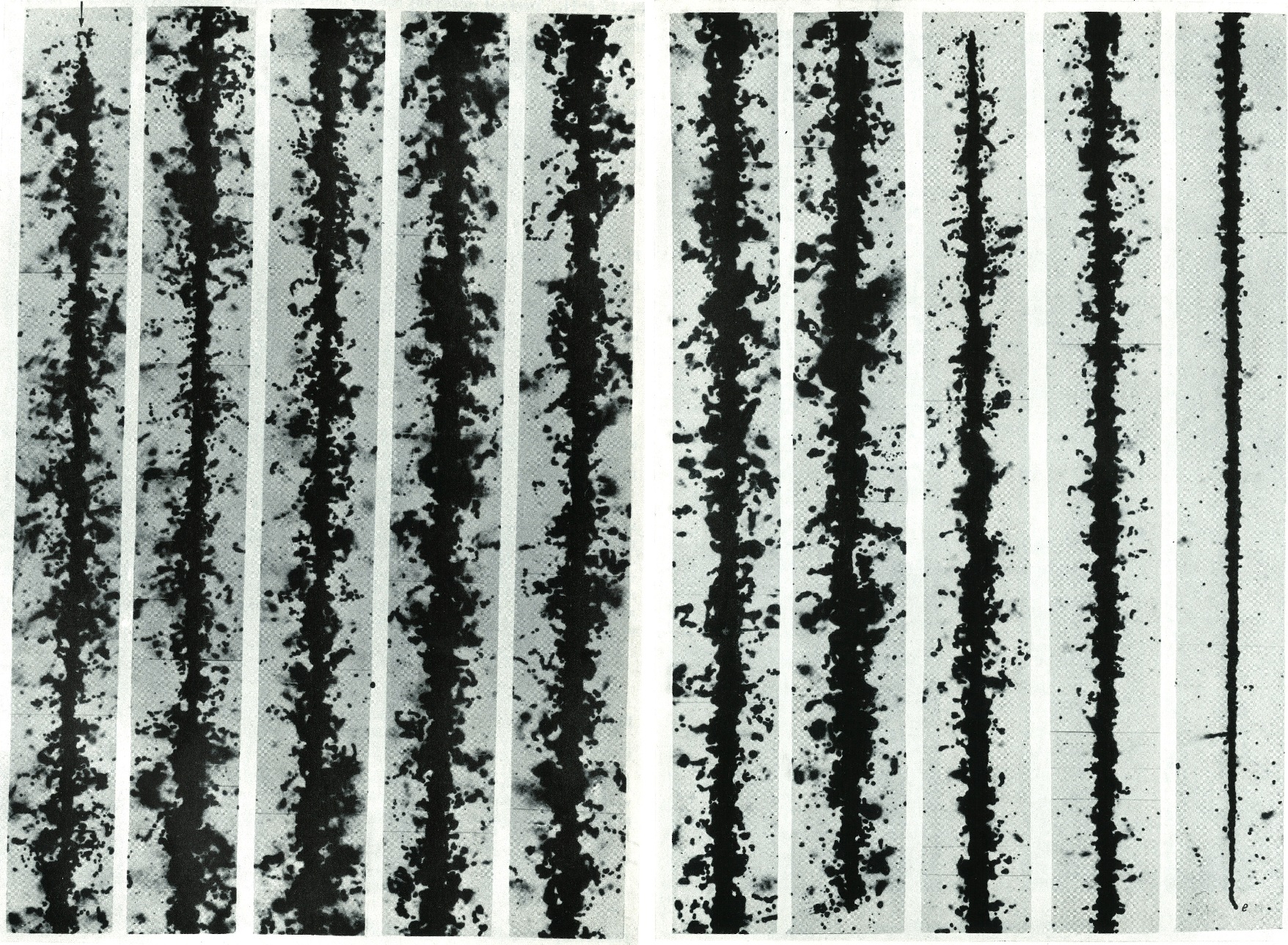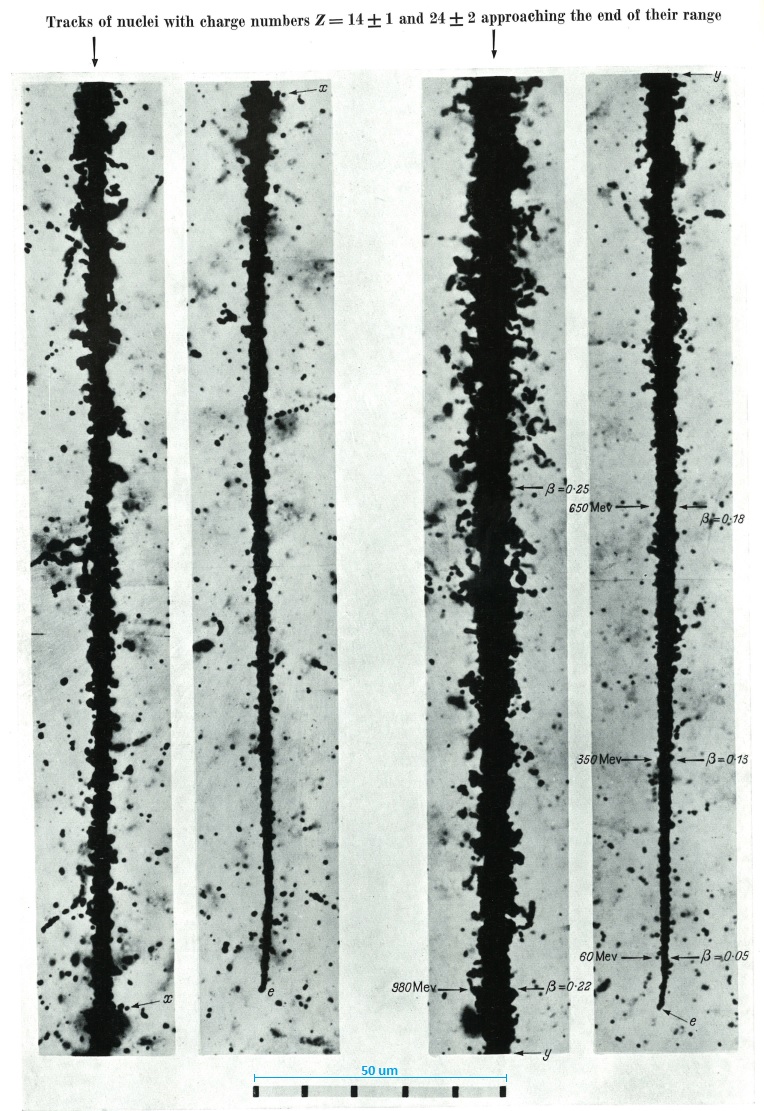It should be noted that the look of heavy nuclei in emulsion (or in a cloud chamber, but it’s really rare to see heavy nuclear fragment, unless to live in a top of a mountain), is different from the tracks of habitual alpha or proton. For a heavy nucleus :
- When the nucleus travel at relativistic velocities, the thickness of the track is thin (dE/dx is low as v≈c,
- Then, when the nucleus have less than 1 GeV of kinetic energy (roughly), the track become 2 to 3 x more thicker, [this case is not observed for proton or alpha particles]
- Then, when the particle approach the end of its range the track become very thin.
You can see this effect in the picture below with a Ne nucleus. The tracks have the same scale.

When the Ne nucleus have about 24 MeV of energy, it begin to capture electrons, and the effective charge of nucleus decrease.
Below, some tracks of low Z nucleus (proton, deuton, triton and alpha) approaching the end of their range. We don’t observe an increase in thickness of the track before the end :
Aparté : check the end of range of muon and pion. These low mass mass particle are easily scattered.
The explication of this phenomenon is well explained by Powell. What make the track going bigger is the number of delta ray created. We saw previously that the number of delta ray n produced lies in the following relation :
When the particle move fast (v at relativistic speed), the number of delta ray produced are low, so the core of the track is thin. When the particle lose more and more energy approaching the end of its range, the velocity decrease and so the number of delta ray increase. At this time, the z of the nucleus remain high, the nucleus move too fast to capture nearby electrons which can reduce its charge. As the number of delta ray produced is also proportional to z², the tracks of the particle looks thicker because the delta rays get a lot of energy and can travel a few microns in the emulsion making a track of great thickness (T’max is dependent with the value of β).
At a certain point, when the nucleus have about a dozen of MeV, the nucleus begin to capture electrons from the medium and the z decrease : the number of produced delta ray decrease, and the same is for the energy they receive from the nucleus : the track becomes thinner until it stop. During the slow down of the particle, the energy loss by soft collisions increase also but as it don’t produce delta rays, it don’t make the track thicker. Original explanation by Powell.
[Picture below] : End of range of a Z= 18e nucleus. The increase in the thickness of the core and the decrease in the maximum range of the δ-rays, corresponding to the falling velocity of the particle, can be seen in the first seven photographs, followed by the ‘thin-down’ as the particle approaches the end of its range at e. Between photographs 7 and 8 the particle traversed a narrow air-gap between facing emulsion.
[Picture below] In the case of the heavy nucleus Z=22, capture of electrons into the K-orbit become possible when the residual range is 80 μm ; and into the L-orbits when the range is 15 μm. Capture of electrons loss of of effective charge of such a nucleus increases its range by about 40 μm.



